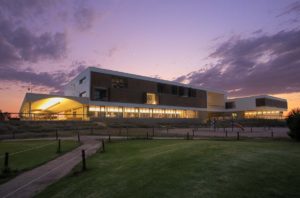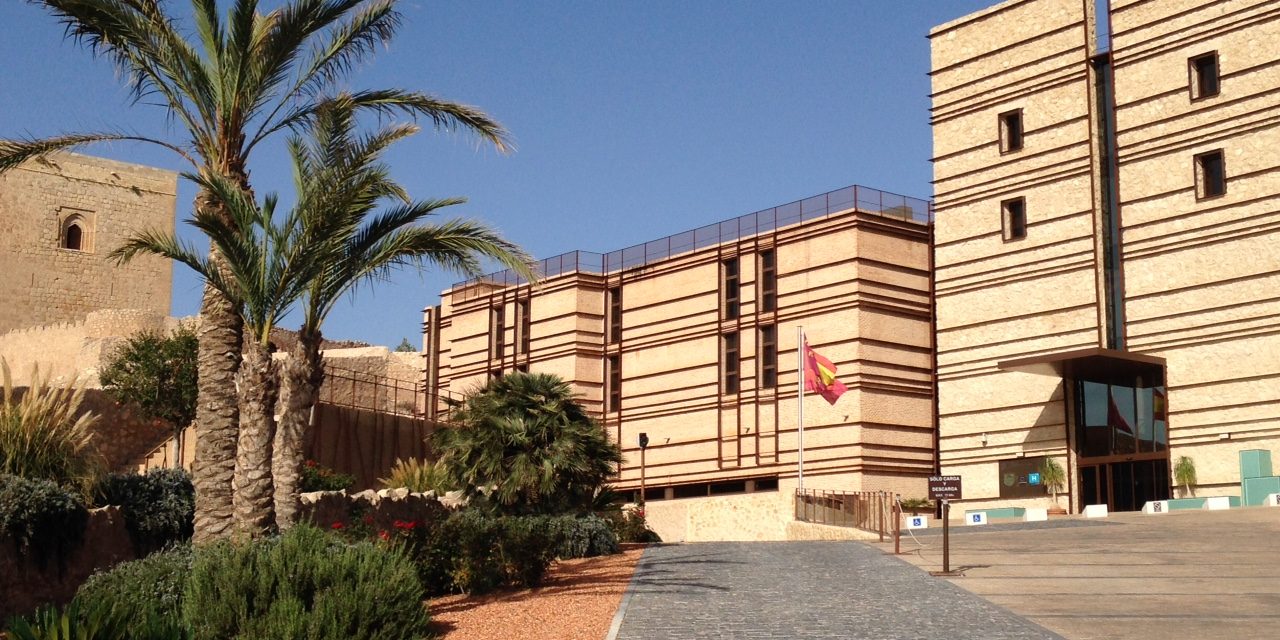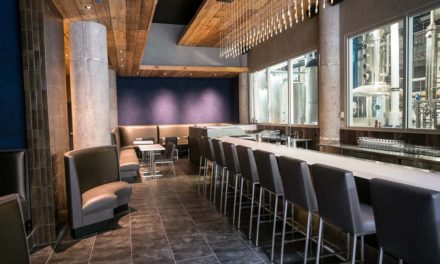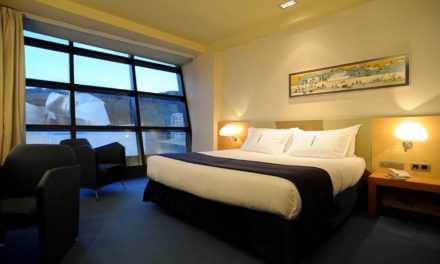In a country that is as old as Spain, you’ll find amazing castles and fortresses and convents and other historic sites. And that’s one of many draws that lure visitors. But what’s unique about Spain is that you can visit many of their historic sites, go to sleep there and wake up.
That’s what the Paradores offer: these are historic landmarks that have been transformed into state owned hotels throughout Spain. And while the experiences vary, you’ll find consistent quality throughout each of the Paradores (typically four star properties).
There are currently 94 Parador Hotels in Spain — I have had a chance to visit four and stayed at two so far. While Paradores are popular for leisure travelers, they are also popular for Spanish business meetings and events.

Parador de Malaga Gibralfaro. © 2017 Rob Hard
This stone parador is perched above Malaga and built next to Gibralfaro Castle. It’s located in the old quarter of Malaga and has amazing views of the Malaga Bay and the city. Malaga is Spain’s fifth largest city (located in Andalusia) and the birthplace of Pablo Picasso.
It has 38 guest rooms (33 with two twin bedded rooms and five with double beds) — each generous in size with traditional furnishings and room amenities needed to relax or get work done. I stayed in room 102, located on the main floor, and it included a balcony that has a guest table and two chairs (which I immediately checked out and it has a nice view of the port and bay.
The lobby lounge and outdoor terrace is the perfect spot to relax and enjoy tapas. The rooftop pool is also a peaceful spot where you can sit or take in the views (look down and you’ll see Plaza de Toros de la Malaga — the bull ring). For business meetings, this parador has three meeting rooms.

Parador de El Saler (Courtesy image)
This parador is more of a modern hotel, located about a 20-minute drive outside of Valencia (about 11 miles). Built on a nature preserve, Parador de El Saler is known for its 18-hole golf course (built in 1968 by Javier Arana) and view of the sea. Both are impressive. And large windows throughout the lobby, walkways and guest rooms not only flood the space with light, they take advantage of those views.
Parador de El Saler has a dedicated area for conventions space, but this parador is a standout because there are so many spaces where you can take your attendees throughout your program both day and night (groups up to 400). The lobby reception is large and spacious central gathering place. The lobby bar is expansive and a great place to pull together a couple of tables for you and your friends or colleagues. Dining facilities are comfortable (gastronomy is classic Valencian cooking and Mediterranean cuisine). You can enjoy cocktails on their expansive terraces. And the golf course offers other options. This parador can hold groups up to 400 attendees, and the gastronomy is classic Valencian cooking and Mediterranean cuisine.
There’s also a modern with a range of treatment options and a wet area that includes a heated indoor swimming pool, Finnish sauna, Turkish sauna, heated lounge chairs, a steam room, fitness area and more.

Parador de Lorca. © 2014 Rob Hard
Lorca is part of the Murcia region located near Spain’s southeast coast. Lorca is also known for its Baroque architecture. Parador de Lorca is build on Lorca Castle, a medieval fortress that was constructed between the 9th and 15th centuries. Lorca is another Spanish city that was a meeting point between Christian, Muslim and Jewish cultures. This Parador is also build on an archaeological site which is excavating remnants of a 15th century synagogue. You can also experience the castle’s citadel called Fortaleza del Sol (Fortress of the Sun) and walk through the remnants of a Muslim cistern.
Parador de Lorca is perched high above Lorca, so it offers both privacy and views. The hotel is one of the newest a modern hotel with 70 guest rooms (including nine suites) and designed using materials from the region. As such there’s the addition of a co-ed, spa wet area and an indoor pool. The hotel offers eight meeting rooms and there’s also an impressive outdoor patio that’s located just off of Restaurante Helios, which serves classic cuisine from the region — stews, fish, fruits, vegetables and wines.

Parador de Hondarribia (Courtesy image)
Located about 30 minutes outside of San Sebastian, Hondarribia is a small fishing and tourist village — the Basque coastline is filled with wonderful towns like this.
Parador de Hondarribia has 34 guest rooms, a seated breakfast room, a lobby bar and two smaller meeting rooms. The hotel occupies a castle that was built by the king of Navarre, Sancho Abarca, in the 10th century. It still retains the appearance and atmosphere of an original medieval fortress and provides a magnificent backdrop to the costal location. The thick-walled exterior of the fortress disguises its beautifully renovated interior.
Do not miss the immense, natural beauty of the stonework in the courtyard or the stunning sea views from the terrace and some of the bedrooms, along the French coast. Allow yourself to be drawn into the beautiful atmosphere of the castle as you explore its hidden nooks and crannies, wandering through its arches and admiring the wrought-iron work and coffering that adorn the walls and ceilings. Spears, cannons, and suits of armor bring an air of elegance to the comfortable surroundings.
Parador Hondarribia is perched at the top of a hill and offers amazing views. It’s easy to get around by foot from here. To get to the seaside, you can either walk through the cobblestone streets that are lined with small, local shops, or you can take the elevator that quickly brings you up/down.
Trust me, staying at an old fortress like this — and heading downstairs for breakfast in the morning — is something you’ll remember.

Parador de Toledo (Courtesy of Toledo Convention Bureau)
Toledo, Spain (known as the City of Three Cultures) is a World Heritage Site by UNESCO in 1986 because of its Christian, Muslim and Jewish past. Toledo is located just about an hour outside of Madrid. Parador de Toledo has 79 guest rooms. Whether you’re staying here or elsewhere in town, the hotel’s massive outdoor terrace offers stunning views of the historic city during the day and in the evening. The hotel has three different meeting rooms that can be configured for groups that are 25-130 in size (depending on configuration). There’s also an excellent restaurant and pool for guests.

Parador de Cordoba (Courtesy image)
Cordoba, Spain (located in Andalusia) has a remarkable history of cultures that settled here during Roman, Muslim and Christian eras. Parador de Cordoba is located a short drive away from the historic center (in the modern city portion of Cordoba). It’s a modern facility that is built onto the ruins of Abd-al Rahman III’s summer residence (he was the Emir and Caliph of Cordoba (912-961 A.D.). This Parador has 94 rooms, a restaurant (which is impressive for private events), a bar/lounge, outdoor pool and tennis courts. It also has 10 meeting rooms, offering nice conference spaces for business meetings and events.
Create Your Own Paradores Itinerary
Whether you’re looking to find a unique hotel for your meeting and trying to create your own travel plans in Spain, the Paradores are likely to be part of your plans.
In 2013 I received a request from a reader who was planning a personal holiday to Spain — first time there. She and her husband were renting a car to experience the wine regions. She wrote:
“We’ve done some research and are planning to visit Castile Leon. We ‘ll spend a few nights in Tordesillas, then travel up to Cervera de Pisuerga. After 3 nights, we are headed to Rioja and will stay in a small town close to Haro. After a couple of nights, we head back toward Madrid, and will spend one night in Siguenza en route. We’ll stay just outside Madrid for a few days in Alcala de Henares.”
I shared some insights with her, including initial thoughts about food and wine, etc. I also mentioned the importance of hiring local guides to gain historical insights whereshe visits (and to use official guides associated with the tourist boards because they are licensed). And then thinking about her request and locations, it seemed that she could have been staying at Paradores somewhere along the way. And, sure enough, she was staying at Paradores the whole time.
I reached out to the Tourist Office of Spain in Chicago, and they shared more insights with me. For example, the wine town of Haro is a must for this type of itinerary. With respect to Castilla-Leon, which visitors love for the food, wine, and culture (Burgos, Leon, Valladolid and Salamanca come to mind).
Experience Your Stay at a Parador in Spain:
[flgallery id=69/]
Have you stayed at a Parador? Share your experience here.














